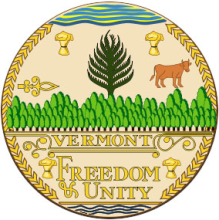Vermont’s New 10-Year Telecommunications Plan Centers Community Interests and Public-Private Partnerships
The Vermont Department of Public Service released its most recent 10-year telecommunications plan earlier this month, once again prioritizing Communication Union Districts (CUDs) as the key to closing the digital divide and connecting the 51,000 households that remain unserved and underserved throughout the state.
The nearly 400-page report outlines a community-centered plan to deploy infrastructure providing 100 megabits per second (Mbps) symmetrical broadband across the state, with capabilities to increase speeds when demand warrants it. The plan maintains that the two main ways to get there are via partnerships and fiber.
The report - which was developed in partnership with CTC Energy and Technology and Vermont-based Rural Innovations Strategies, Inc. - details the importance of optimizing the power of public-private partnership in maintaining that balance.
The plan comes off the heels of the state legislature passing H.B. 360, a $150 million broadband bill which was funded by the federal American Rescue Act Plan, in May. The bill, now Act 71, created the Vermont Community Broadband Board and tasked the board with helping to fund and organize the deployment of broadband infrastructure for Vermont's nine CUDs.
CUDs were created in 2015, when the state legislature passed a law allowing two or more towns to join forces as a municipal entity and build communication infrastructure together. The hope was that CUDs would prompt local areas to assume responsibility and control over the broadband solution in their areas by collaborating with ILECs and ISPs. They succeeded and have been rapidly gaining steam over the last few years, with, for example, some DV Fiber currently working to serve upwards of 20 towns in the Southeast corner of the state, and NEK CUD working in Vermont’s Northeast Kingdom to serve more than 50.









